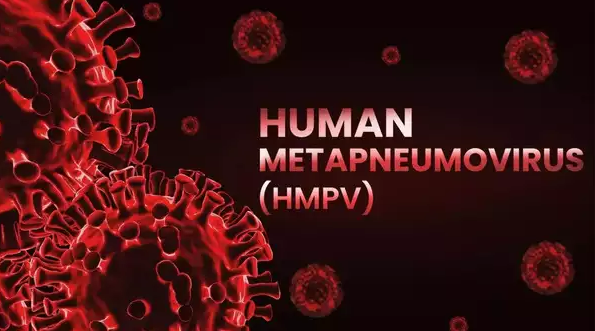Human Metapneumovirus (HMPV) – A Comprehensive Guide
Human Metapneumovirus (HMPV) -A Comprehensive Guide
Human Metapneumovirus (HMPV) is a respiratory virus that has been increasingly recognized as a significant cause of respiratory infections in humans. Discovered in 2001, this virus primarily affects young children, older adults, and individuals with compromised immune systems. Despite its widespread prevalence, many people are unaware of HMPV, its risks, symptoms, and treatment options. In this article, we delve into the key aspects of hMPV, providing you with a comprehensive understanding of this virus.
HMPV is a single-stranded RNA virus that belongs to the Pneumoviridae family, closely related to the respiratory syncytial virus (RSV). It is a common cause of upper and lower respiratory tract infections worldwide. The virus spreads through respiratory droplets and direct contact, making it highly contagious in crowded settings such as schools, hospitals, and nursing homes.
The severity of HMPV infections varies depending on the individual’s age, overall health, and immune system status. For most healthy individuals, hMPV causes mild, cold-like symptoms that resolve without complications. However, the virus can be dangerous for:
- Young children, particularly those under the age of five, as their immune systems are still developing.
- Older adults, especially those with chronic health conditions such as heart disease or diabetes.
- Immunocompromised individuals, including those undergoing chemotherapy, organ transplant recipients, or individuals with HIV/AIDS.
Severe cases of hMPV can lead to complications such as pneumonia, bronchiolitis, and respiratory failure, requiring hospitalization and intensive care.
How Long Does It Take to Recover from Human Metapneumovirus?
Recovery from HMPV varies depending on the severity of the infection and the individual’s overall health. In most cases, mild infections resolve within 7 to 10 days. However, severe infections, particularly those requiring hospitalization, may take several weeks for full recovery.
- Mild Cases: Symptoms improve in about 1 week.
- Severe Cases: Recovery may take 2-3 weeks or longer, especially in patients with underlying conditions.
Individuals infected with hMPV are typically contagious for about 3 to 8 days. However, some individuals, especially young children or immunocompromised patients, may shed the virus for a longer duration.
- Incubation Period: The incubation period for hMPV ranges from 4 to 6 days after exposure.
- Viral Shedding: Adults with strong immune systems usually stop being contagious within a week, while others may continue shedding the virus for up to 2 weeks.
The symptoms of HMPV resemble those of other respiratory infections and can range from mild to severe. Common symptoms include:
- Mild Symptoms:
- Cough
- Runny or congested nose
- Sore throat
- Mild fever
- Severe Symptoms (in vulnerable populations):
- Shortness of breath
- Wheezing
- High fever
- Fatigue
- Rapid or labored breathing
- Chest pain
In severe cases, hMPV can progress to pneumonia or bronchiolitis, leading to hospitalization.
Currently, there is no specific antiviral treatment for hMPV. Management focuses on relieving symptoms and supporting recovery. Treatment options include:
- For Mild Cases:
- Rest and hydration
- Over-the-counter medications for fever and pain (e.g., acetaminophen or ibuprofen)
- Use of humidifiers to ease breathing
- For Severe Cases:
- Oxygen therapy for individuals experiencing difficulty breathing
- Hospitalization for complications like pneumonia or bronchiolitis
- Intravenous fluids for dehydration
Prevention is the best strategy to combat HMPV. This includes maintaining good hygiene, avoiding close contact with sick individuals, and disinfecting commonly touched surfaces.
COVID-19 vs. hMPV: Key Differences
| Feature | COVID-19 | HMPV |
|---|---|---|
| Causative Agent | SARS-CoV-2 | Human Metapneumovirus |
| Transmission | Respiratory droplets, airborne, contact surfaces | Respiratory droplets, direct contact |
| Symptoms | Fever, cough, fatigue, loss of taste/smell, body ache | Cough, runny nose, sore throat, mild fever |
| Incubation Period | 2-14 days | 4-6 days |
| Contagious Period | 10-14 days (or longer) | 3-8 days |
| At-Risk Groups | Elderly, immunocompromised, pre-existing conditions | Children, elderly, immunocompromised |
| Complications | Severe pneumonia, multi-organ failure, long COVID | Pneumonia, bronchiolitis, respiratory failure |
| Treatment | Antivirals, supportive care, vaccines available | Supportive care, no specific antiviral |
| Vaccination | Widely available | No vaccine currently available |
Prevention Tips for HMPV
Preventing HMPV infection involves simple yet effective measures:
- Practice Good Hygiene:
- Wash hands frequently with soap and water for at least 20 seconds.
- Use alcohol-based hand sanitizers if soap is unavailable.
- Avoid Close Contact:
- Stay away from individuals who show symptoms of respiratory illness.
- Avoid crowded places during peak respiratory virus seasons.
- Disinfect Surfaces:
- Regularly clean high-touch surfaces such as doorknobs, light switches, and mobile devices.
- Boost Immunity:
- Eat a balanced diet, stay hydrated, and get adequate sleep.
- Consider supplements like vitamin C and zinc to support immune health.
- Wear Masks:
- Use face masks in high-risk settings to minimize exposure to respiratory droplets.
Human Metapneumovirus, while often mild, can pose significant risks to vulnerable populations. Understanding its symptoms, transmission, and prevention can help individuals protect themselves and their families. Though no specific treatment or vaccine exists for HMPV, supportive care and preventive measures can effectively manage the virus and limit its spread. As we continue to learn more about HMPV, ongoing research holds promise for improved treatments and vaccines in the future.
Also Read:-
Moto G05: Everything You Need to Know About the Upcoming Smartphone in 2025
International Space Station’s 10 Interesting & mysterious facts you need to know
Hyderabad 2025: Exploring a Perfect Blend of Heritage and Modernity in Tourist Destinations
Rising Concerns Over HMPV Surge in China – How Does It Compare to COVID-19?
EPFO ATM Card and Mobile App: Key Features, Launch Timeline, and Impact on Subscribers in 2025
HMPV Virus spreading across the world, How does it spreads, Symptoms, Treatment and cautions
